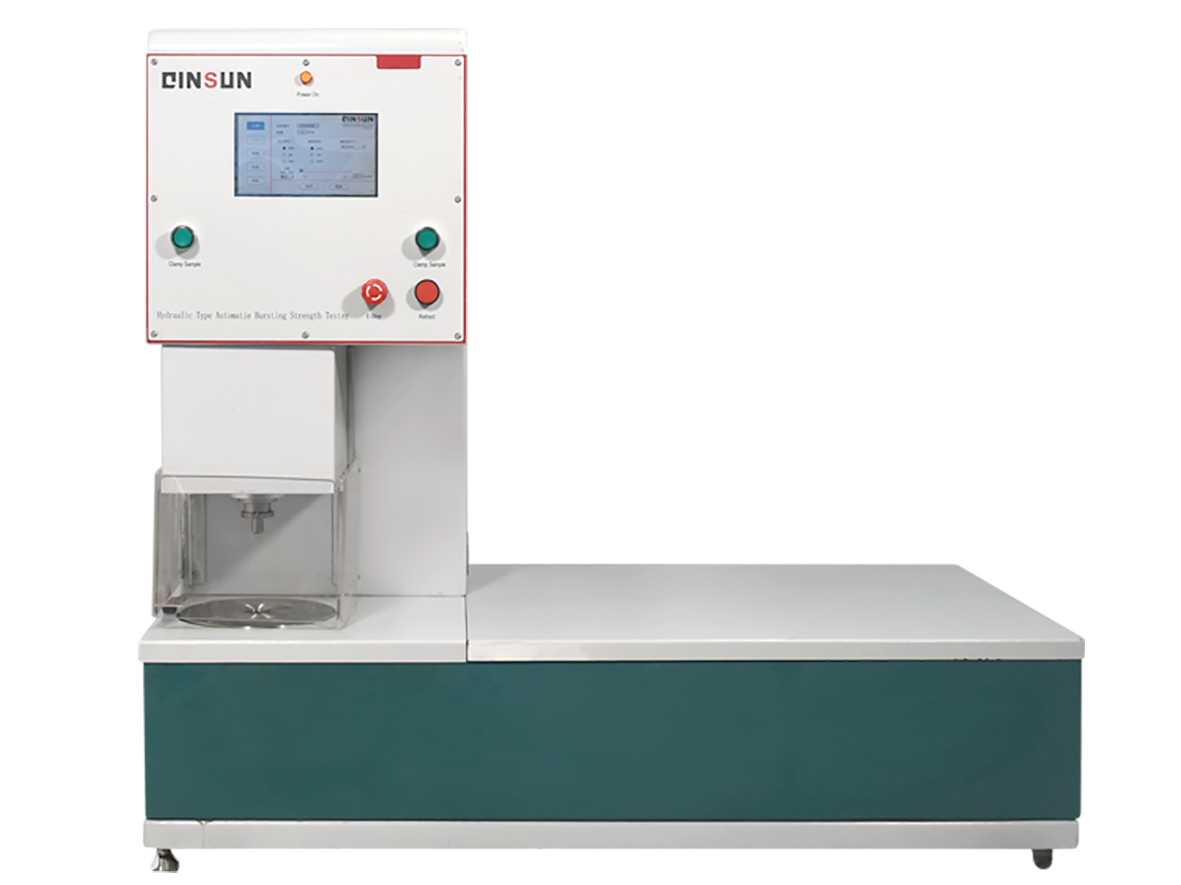Hydraulic fabric bursting strength tester test calibration
The hydraulic fabric bursting strength tester is used to determine the expansion force and expansion performance of various textiles, non-woven fabrics and other materials when they are subjected to forces in warp, weft and all directions at the same time (elastic diaphragm method).
Gellowen Science is the supplier of the old brand standard equipment, offering a comprehensive range of products across multiple industries. With a world-renowned reputation, Gellowen Science has established strategic partnerships with numerous multinational corporations. Our company is also actively involved in developing testing equipment for various fields, particularly focusing on providing customized solutions for our customers. We boast a talented team in research, development, design, and production of software and hardware, ensuring our testing equipment offers high quality, stable testing procedures, and advanced intelligence. Our testing equipment caters to production, education, research, quality inspection, and more, adhering to standards from different regions and countries, including EN, ISO, and BS.
Standards
ASTM D3786, ERT 80-4-20, GB/T 7742.1, BS EN ISO 13938-1, BS 3424-6-B, ISO 3303-B, ISO 2758, ISO 3303.2, ISO 3689, JIS L1018 L1093, IWS TM170

Test principle:
Clamp the sample above the rubber diaphragm, increase the liquid volume at a uniform speed, so that the liquid presses the diaphragm to expand and burst the sample. The bursting strength of the sample is the difference between the liquid pressure and the elastic strength of the diaphragm.
Test samples:
1. Batch sampling-as the batch sampling to be tested, a certain amount of materials that meet the performance or supply are randomly selected.
2. Laboratory sampling - The laboratory sampling to be tested is to remove at least 1 meter from the outside of each roll of batch sampling, and then take a cloth sample with a width of 1 meter. Cut a strip sample of at least 305mm wide from the cylindrical knitted fabric or each roll selected from the batch sampling.
3. Test samples - Take 10 samples for each sample, each sample is at least 125mm2.
Test calibration:
1. Routine calibration of the tester - Test five pieces of standard aluminum foil to check the tester at least once a month. The average bursting strength of five pieces of standard aluminum foil should not exceed ±5% of the value on the aluminum foil package.
2. Calibration of the pressure gauge - Calibrate the pressure gauge to the same inclination as when it is used, using the piston type or mercury column pressure calibration method. When calibrating, let the pressure gauge be placed in the position where it is normally used.
3. If no agreement can be reached, test the tester according to the instructions in Tappi method T-403OS-74.
Test steps:
① Humidify the sample under standard atmosphere, take representative samples suitable for the test area, and take 3 parallel samples for each test.
② Select a diaphragm with a suitable test area, adjust the hydraulic speed, and control the bursting time within a reasonable range.
③ Load the sample onto the diaphragm to make the sample in a pressure-free state.
④ Start the equipment after zeroing, record the bursting speed, time, height and strength, and calculate the average value.
Bursting time:
Bursting time refers to the time required for the bursting process. GB/T 7742.1-2005 has clear provisions on the bursting time, but the instrument cannot set the bursting time. Therefore, the specified bursting time must be achieved by controlling the bursting speed. When the bursting area is 7.3cm2, the relationship between the bursting speed and the bursting time of the three samples. The bursting time and the bursting speed are not linear, which is caused by the nonlinear stress-strain relationship inside the fabric. For different fabrics, the bursting speed corresponds to the bursting time at different speeds, but the overall trend is that the bursting time decreases with the increase of the bursting speed, and in a small range, the bursting speed and the bursting time have a certain linear relationship. Therefore, when adjusting the bursting time, the desired bursting time can be inferred from the results of the first test.

